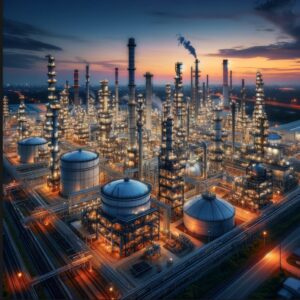Manali Petrochemical: MPL has faced a challenging financial period, with a marked decline in its TTM net profit and earnings per share. The operational performance data reflects constraints in profitability and growth metrics, contrasting with previous years where the company demonstrated stronger financial health.
The latest financial performance data for Manali Petrochemicals Limited shows a challenging period for the company. In the third quarter ending December 31, 2023, Manali Petrochemicals reported sales of INR 2,047.5 million, a decrease from INR 2,377 million in the same period the previous year. The revenue also saw a decline, moving from INR 2,442 million to INR 2,124.7 million year-over-year. The net income decreased slightly to INR 29.4 million from INR 31.5 million, with basic earnings per share dropping from INR 0.18 to INR 0.17.
Additional financial metrics show significant trends in the company’s operational performance over recent years. The operating profit, other income, and net profit figures all highlight the financial challenges and performance pressures the company has been experiencing. Specifically, Manali Petrochemicals observed a substantial decline in its compounded profit growth and return on equity in the trailing twelve months, indicating pressures on profitability and shareholder returns
Mangalore Refinery: Without specific data presented here, MRPL’s financial performance traditionally aligns with industry cycles, impacted by crude oil prices and refinery margins. The company’s strategic initiatives in petrochemicals are expected to bolster its diversification and resilience.
Mangalore Refinery and Petrochemicals Ltd (MRPL) has shown notable financial and operational performance. In the trailing twelve months (TTM), MRPL reported sales of Rs. 90,481 crores, demonstrating a 10% operating profit margin (OPM). The net profit stood at Rs. 4,367 crores with an earnings per share (EPS) of 24.92. This performance indicates a 16% compounded profit growth in the TTM, with stock price compounded annual growth rate (CAGR) reaching 265% over the last year, underlining significant investor confidence and market performance. The return on equity (ROE) for the last year was calculated at 31%, showcasing efficient equity utilization and profitability.
MRPL’s future financial projections for 2024 and 2025 reveal expectations of continued growth. The sales are expected to reach Rs. 883 billion in 2024 and Rs. 942 billion in 2025. The net income is projected at Rs. 30.8 billion for 2024 and Rs. 26 billion for 2025, suggesting a robust financial outlook. The company’s P/E ratio for 2024 is estimated at 12.2x, reflecting its valuation relative to earnings





